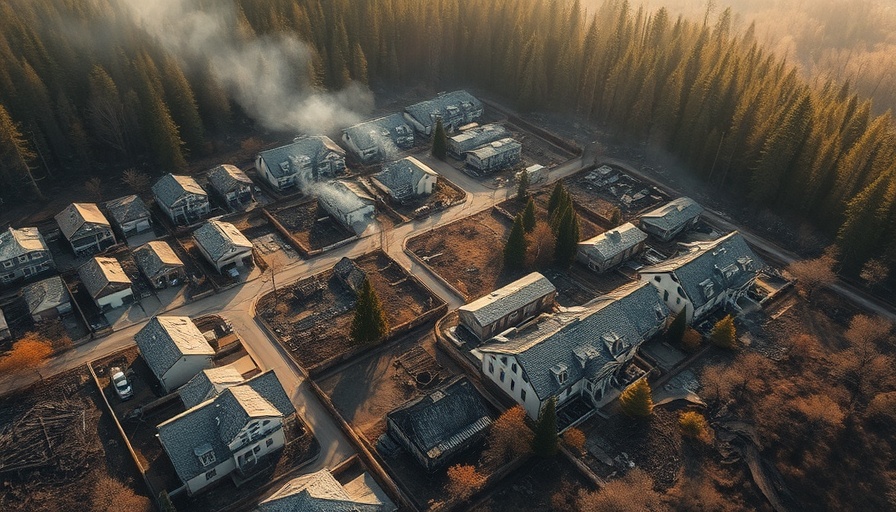
The Aftermath of Arizona's North Rim Wildfire: A Cautionary Tale
As Arizona Governor Katie Hobbs took a helicopter tour of the devastation left by a recent wildfire on the Grand Canyon’s North Rim, the stark reality hit home: nature's fury can transform picturesque landscapes into charred remnants in a matter of days. Over 18 square miles were scorched, highlighting the dire need for effective wildfire management amid increasing climate extremes.
What Happened? Understanding the Fire's Progression
The fire, ignited by a lightning strike on July 4, started under a 'confine and contain' strategy utilized by the Grand Canyon National Park. This approach, aimed at maintaining natural ecosystems, quickly turned out to be an oversimplified method in the face of rapidly changing weather conditions. By July 8, the fire's intensity surged, leading to evacuation orders as officials shifted to aggressive suppression tactics.
Insurance Implications: What Does This Mean for Policyholders?
The physical destruction extends beyond trees and buildings; it raises crucial questions about property damage claims and how insurers will respond to such catastrophic events. In South Carolina, many residents are no strangers to weather-related claims. Depending on your coverage, understanding state-specific clauses for natural disasters can save you from potential financial pitfalls. Governor Hobbs's concerns about the fire management reflect a broader narrative in insurance: proactive measures can lead to smoother claims processes, as opposed to reactive, post-crisis approaches.
Claims After Catastrophes: The Path Forward for Victims
For those affected by similar wildfires or catastrophic events, knowing how insurers handle claims is essential. Common challenges include disputes over damage assessments and delays in claim settlements. Being equipped with knowledge about injury claim news and insurance payout statistics can empower policyholders when navigating these complex landscapes. Any significant destruction, like the loss of the Grand Canyon Lodge, can result in class action insurance lawsuits as owners seek restitution for their losses.
Community Support and Federal Involvement: A Joint Effort
Governor Hobbs's visit to the incident command post serves as a reminder that community assistance and federal response are crucial after devastating events. The integration of local volunteers and federal resources can streamline recovery efforts and ensure that those impacted receive adequate help. As we witness events unfold in Arizona, South Carolinians should remain informed about how national and local policies intersect in times of crisis, especially regarding consumer rights versus insurer obligations.
Looking Ahead: Future Preparedness Strategies
The wildfire along the North Rim not only illustrates the immediate aftermath of destruction but also poses the question of long-term strategies for risk management and recovery. As Secretary of the Interior is expected to discuss fire management policies, understanding this narrative is vital for all residents—especially for those navigating the tumultuous waters of the insurance landscape following a disaster. Insight into fire and storm damage claims can illuminate potential pitfalls and successes in the claims process.
 Add Row
Add Row  Add
Add 




Write A Comment